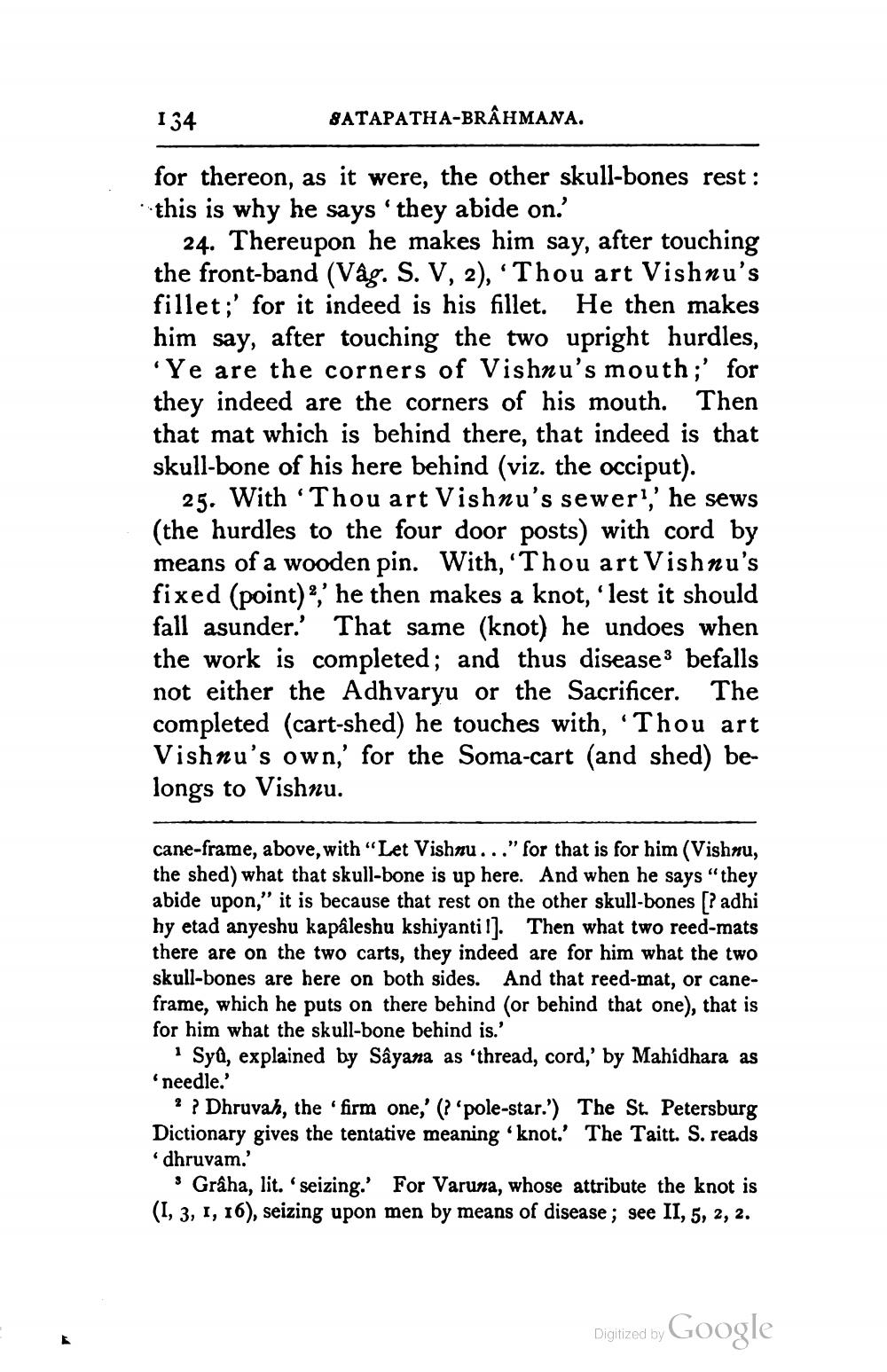________________
134
8ATAPATHA-BRAHMANA.
for thereon, as it were, the other skull-bones rest: this is why he says 'they abide on.
24. Thereupon he makes him say, after touching the front-band (Vag. S. V, 2), 'Thou art Vishnu's fillet;' for it indeed is his fillet. He then makes him say, after touching the two upright hurdles,
Ye are the corners of Vishnu's mouth;' for they indeed are the corners of his mouth. Then that mat which is behind there, that indeed is that skull-bone of his here behind (viz. the occiput).
25. With 'Thou art Vishnu's sewer?,' he sews (the hurdles to the four door posts) with cord by means of a wooden pin. With,'Thou art Vishnu's fixed (point)?,' he then makes a knot, 'lest it should fall asunder.' That same (knot) he undoes when the work is completed; and thus disease 3 befalls not either the Adhvaryu or the Sacrificer. The completed (cart-shed) he touches with, “Thou art Vishnu's own,' for the Soma-cart (and shed) belongs to Vishnu.
cane-frame, above, with “Let Vishnu..." for that is for him (Vishnu, the shed) what that skull-bone is up here. And when he says "they abide upon," it is because that rest on the other skull-bones [? adhi hy etad anyeshu kapâleshu kshiyantil]. Then what two reed-mats there are on the two carts, they indeed are for him what the two skull-bones are here on both sides. And that reed-mat, or caneframe, which he puts on there behind (or behind that one), that is for him what the skull-bone behind is.'
Syü, explained by Sâyana as 'thread, cord,' by Mahidhara as needle.'
? ? Dhruvah, the firm one,' (? 'pole-star.') The St. Petersburg Dictionary gives the tentative meaning 'knot.' The Taitt. S. reads dhruvam.
. Grâha, lit. seizing. For Varuna, whose attribute the knot is (1, 3, 1, 16), seizing upon men by means of disease ; see II, 5, 2, 2.
Digitized by Google




